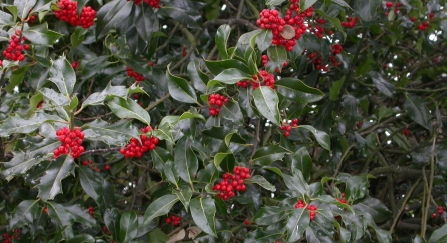
Snipe perched on a tree stump. Picture: Margaret Holland
Lapwing against rainbow by Lakes4Life/Roy Macdonald

Snipe perched on a tree stump. Picture: Margaret Holland
Despite their iconic long beaks and bulky bodies, snipe can stay hidden for a surprisingly long time with their superb cryptic camouflage.
Walking through wet grasslands or damp heaths at this time of year you can be almost on top of one before it suddenly breaks cover with a hoarse croak and shoots up into the air.
We have a native population of snipe in our area year-round but this is boosted by winter visitors. Look out for them this month at wetland reserves like Thatcham Reedbeds in Berkshire, Chimney Meadows in West Oxfordshire or on our Upper River Ray reserves.

The gadwall is a dabbling duck, feeding at the surface of shallow water by 'upending' - sticking its head under the water with its bottom in the air.
From a distance the gadwall can look grey, but closer inspection reveals intricate zigzag patterns across its feathers, called vermiculation (meaning ‘worm-like’), and a pure white panel near the tail.
Only a small number of gadwall nest in the UK, but again, numbers are boosted by overwintering visitors, including Hosehill Lake near Reading and on the lake at our College Lake reserve near Aylesbury. You might even be able to spot one on our College Lake webcam!
College Lake webcam (https://youtu.be/JD6mPNDiBdo)
College Lake bird hide livestream

Lapwing - Credit David Longshaw
With its iridescent green wings, crisp white breast and distinctive black crest of feathers springing opulently off its head, the lapwing is another unmistakable bird.
In winter they can be seen wheeling through the skies in large flocks over farmland and wetlands such as our Upper Ray and Chimney Meadows reserves.

Hen harrier (female) ©Mark Hamblin/2020VISION
Hen harriers are elegant and deadly predators. In the UK there are permanent populations in mountainous areas, but each winter a few birds from the continent migrate to farmland and heathland in south east England.
We've seen them at our Chimney Meadows reserve in West Oxfordshire before so it’s definitely worth keeping an eye out for these majestic visitors there.
Chimney Meadows nature reserve virtual tour (https://youtu.be/6pVBYOT7hGg)
Take a tour of Chimney Meadows nature reserve with Louise and get a taster of this special place

Barn owl © Russell Savory
A distinctive heart-shaped face, pure white feathers and ghostly silent flight make the barn owl very easy to identify. Look out for it flying low over fields and hedgerows at dawn and dusk. We have a barn owl nest box at our Woolley Firs education centre near Maidenhead, but they can be seen right across our region.

Scarlet elfcup fungus at BBOWT's Dancersend nature reserve near Aylesbury. Picture: Mick Jones
In a frosted winter woodland, the luminous lobes of scarlet elfcup fungus almost seem to glow against the gloom.
This species can be seen in late winter and early spring on fallen twigs and branches (often hazel, elm and willow), usually buried under moss. Although not hugely common, we get fantastic specimens each year at our Dancersend and Pavis Woods reserve near Tring.
Sadly, we have had problems recently with people picking fungi at some of our nature reserves which is strictly not allowed. Find out more here:

Another welcome burst of colour in the bleak midwinter is, of course, holly - a rarity in the plant world because it stays green throughout the year, hence its association with Christmas. Look out for its spiked leaves in broadleaf woodlands across our area. Holly trees are either male or female, and if you see red berries, you know it’s a female tree.


A yellowhammer at BBOWT's Grange Meadow reserve. Picture: Phil Gibbs
Male yellowhammers have bright yellow heads and undercarriages, brown wings streaked with black and a chestnut rump.
Sadly, like many other song birds, the UK population has declined alarmingly in recent years. Look out for them in hedgerows or on stubble in winter, our Upper Ray Meadows reserves are a good place to see them.

Brambling by WildlifeWorld for Shutterstock
Another avian winter visitor to the UK is the brambling. These petite song birds are close relatives of the chaffinch and can often be found in the same flocks, where their white rump and nasal calls give them away. They're often found in woodlands, hedgerows and stubble fields, and will sometimes visit garden bird feeders.

Red fox in the snow in winter by Danny Green/2020VISION
For red foxes, December is often the busiest month of the year: winter is the fox breeding season and you can often spot dogs and vixens moving around in pairs.
They can also be very vocal at this time of year, barking and shrieking late into the night in urban areas as much as the countryside.
Sign up below to receive the latest news from BBOWT, tips about how you can help wildlife, plus information on how you can get involved.